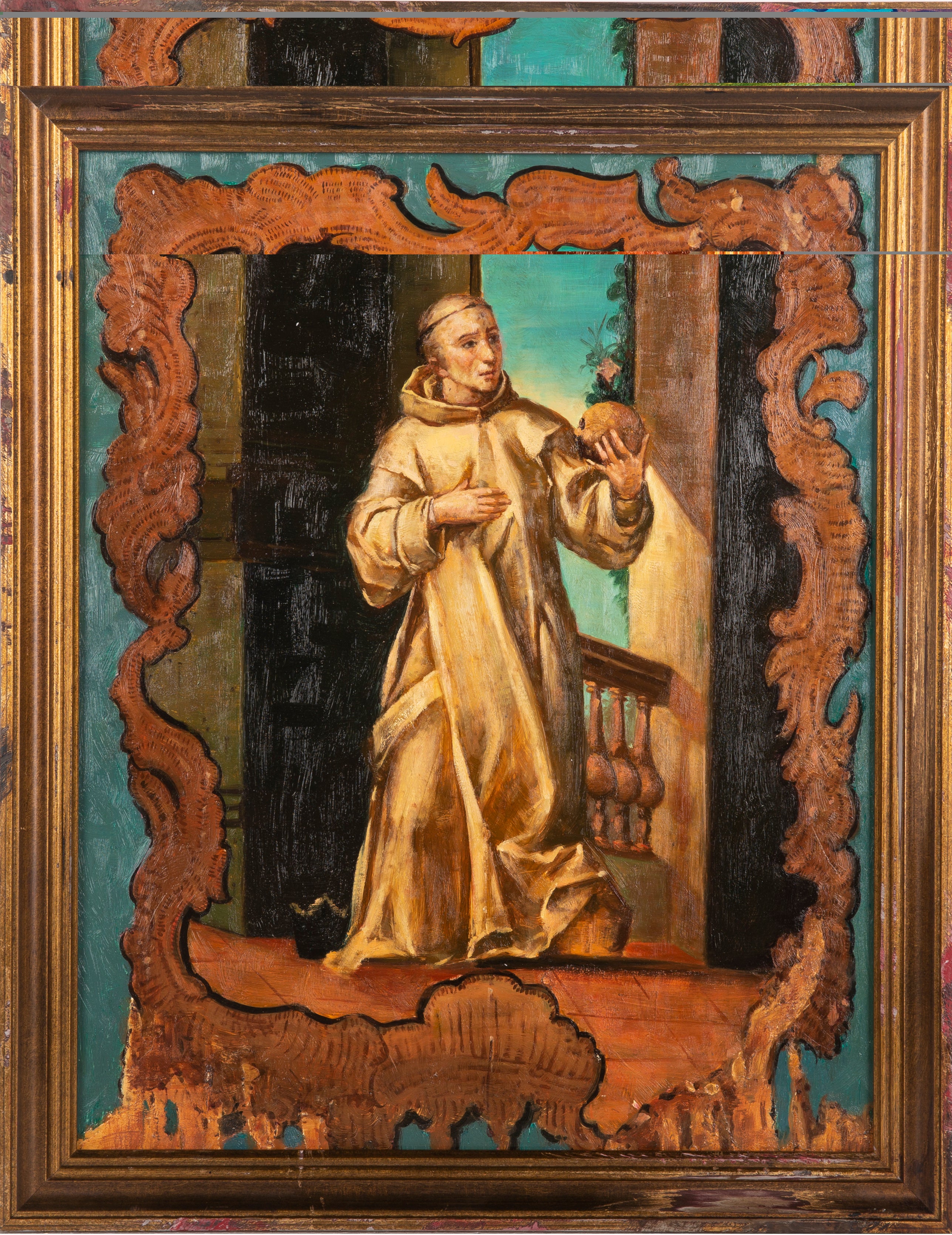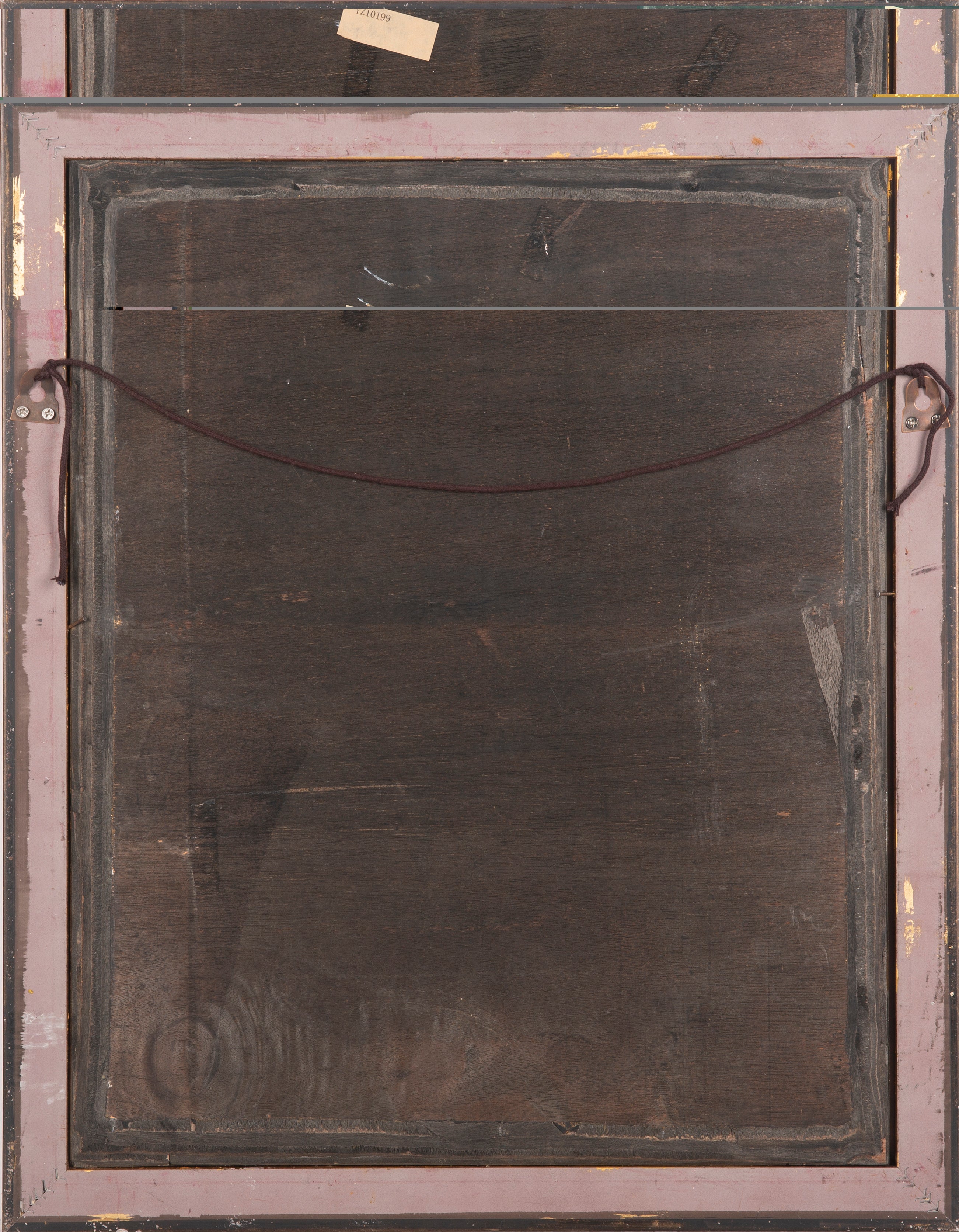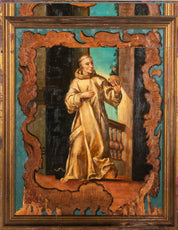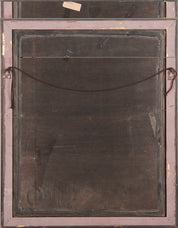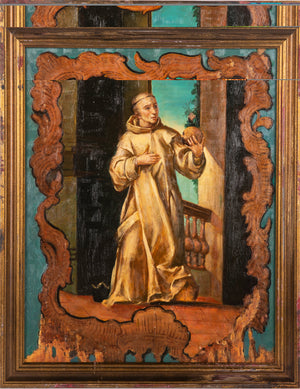Novo-Hispanic School "Saint Bruno"
Novo Hispanic School
Artwork Details
Artwork Description
Artist: Novo-Hispanic School, First Half of the 18th Century
Medium: Oil on Panel, Stenciled
Dimensions: 60 x 44.5 cm (23.6 x 17.5 inches)
Signature: Unsigned
Condition Report:
The piece is in overall good condition, with wear consistent with its age. It shows faults and signs of aging on the panel, which are typical for its period.
Description:
This evocative religious painting depicts Saint Bruno of Cologne, the revered founder of the Carthusian Order. The saint is portrayed in a contemplative pose, embodying the dual active and contemplative aspects of his life. Saint Bruno's attire and attributes adhere to his traditional iconography, symbolizing his piety, humility, and renunciation of worldly power.
The painting highlights key symbolic elements associated with Saint Bruno:
- The Star on His Chest: Alludes to the vision of Bishop Hugh of Grenoble, who reportedly saw a star heralding Saint Bruno's arrival.
- The Skull and Book: Represent the transience of life and his scholarly theological pursuits.
- The Mitre and Crozier: Placed at his feet, symbolizing the ecclesiastical authority he relinquished.
- The Olive Branch: A sign of sanctity and peace, reinforcing the saint's spiritual devotion.
The composition is framed against a dark background, directing focus to the serene yet austere expression of the saint. The style reflects the Novo-Hispanic school's adherence to religious themes and its aim to foster Christian devotion, particularly among indigenous communities during Spanish colonial rule.
Provenance and Influence:
The Novo-Hispanic school emerged under Spanish colonial influence, with artists emulating Spanish religious works while incorporating local traditions and techniques. This painting follows those conventions, adhering to strict iconographic norms and presenting a devotional image intended for catechism and worship.
Notes:
The religious art of the Novo-Hispanic school was primarily utilitarian, designed to educate and convert indigenous peoples to Christianity. This painting exemplifies the meticulous craftsmanship and devotional intent characteristic of the period, with its detailed rendering and symbolic richness.

